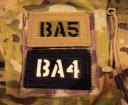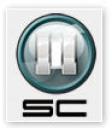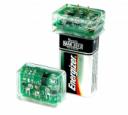
My first exposure to TRON was at SOFIC in conjunction with BAE’s Corona system. Since then I have been doing some research on this revolutionary Combat ID system. I post the article from February of this year from Associated Press as a backgrounder.
Originally published by Associated Press February 20, 2008
DAYTON, Ohio – When Taliban forces attacked a police checkpoint in central Afghanistan under dark of night in late 2006, special-operations Master Sgt. Andrew Martin called in air support and then slapped a high-tech cloth-like device on his helmet for protection.
Fresh from labs at Wright-Patterson Air Force Base, the device transmitted light from a powerful light-emitting diode, or LED, that pulsed through a fiber optic bundle, giving off infrared signals visible to pilots wearing night-vision goggles.
“The pilots were able to very quickly pick it up,” recalled Martin, who has since retired from the Air Force. “What didn’t happen was additional questions from the pilots asking me my location.”
The new technology – called Target Recognition Operator Notification system – was designed to easily identify friendly forces and avoid casualties from friendly fire.
Martin liked the equipment so much he used it on about 35 missions over six months. He said it is better than strobe lights, which can be mistaken for machine-gun fire, or reflective tape, which is difficult to see from the air.
“U.S. forces have been dogged by the difficulty of finding each other in the fog of battle,” said Loren Thompson, a defense analyst with the Lexington Institute in Arlington, Va. “What this new innovation allows is easy identification of friendly forces without helping the enemy do the same thing.”
Brian Hunt, an engineer with the Air Force Research Lab, said he and his team were approached in 2004 and asked to develop such a system. Working with Lumitex Inc. of Strongsville, the effort was part of a rapid-reaction program where researchers were given up to $100,000 and one year to come up with a product.
“A lot of different units saw the need for something like this, to be able to clearly determine friend or foe,” Hunt said.
The group produced 108 prototypes in six months. Each unit costs about $100.
Built in to the nylon-like cloth is a circuit board and a battery pack. The woven nature of the cloth emits light in a controlled way, creating a uniform surface.
The system can run 200 hours on two double-A batteries and weighs less than three ounces. It can be worn on tactical vests, around an arm or mounted to a helmet.
“You can put it anywhere,” Hunt said. “It’s got Velcro on the back. It sticks to everything.”
The circuitry also allows the system to flash at different speeds. That enables pilots to identify different groups of friendly forces and see which group is under attack, which group is trying to circle the enemy, and who the reinforcements are, among other things.
Mike Sedillo, support contractor at the research lab, said he would like to see the system in the hands of all U.S. forces in the battlefield and become standard equipment in air-crew survival kits.
Sedillo said researchers are working to upgrade the system so it will transmit light in other parts of the spectrum, making it more difficult for enemy forces to detect with conventional night vision technology.
“Friendly fire incidents in general are declining, but in counterinsurgency or counter-terror warfare it’s much harder to sort out our people from the other side because there are no front lines,” Thompson said. “This invention is well-suited to a world in which all the old features of battlefield like secure areas and front lines are missing.”
Copyright AP 2008, Photo Copyright AP 2008



















































































































